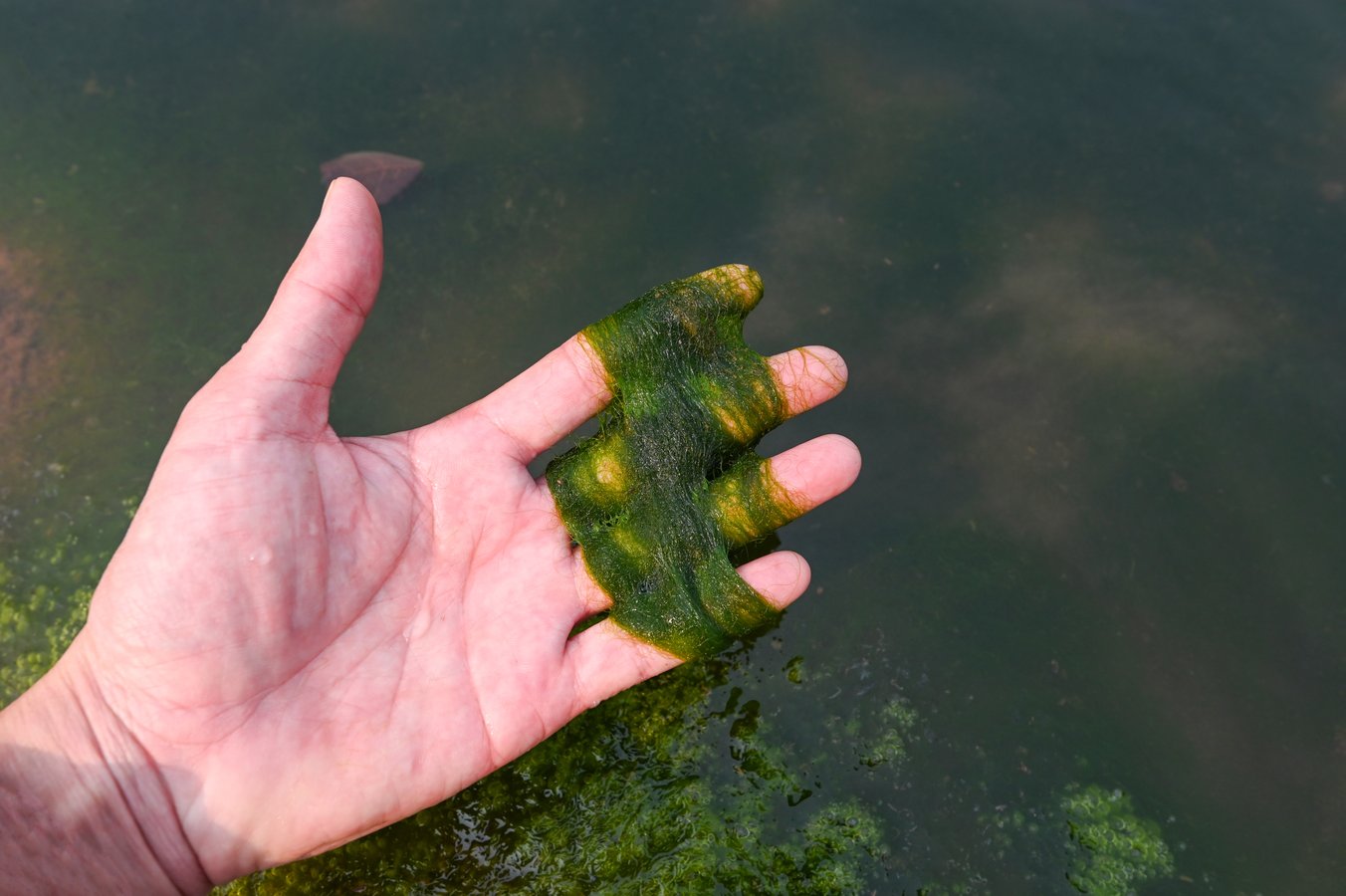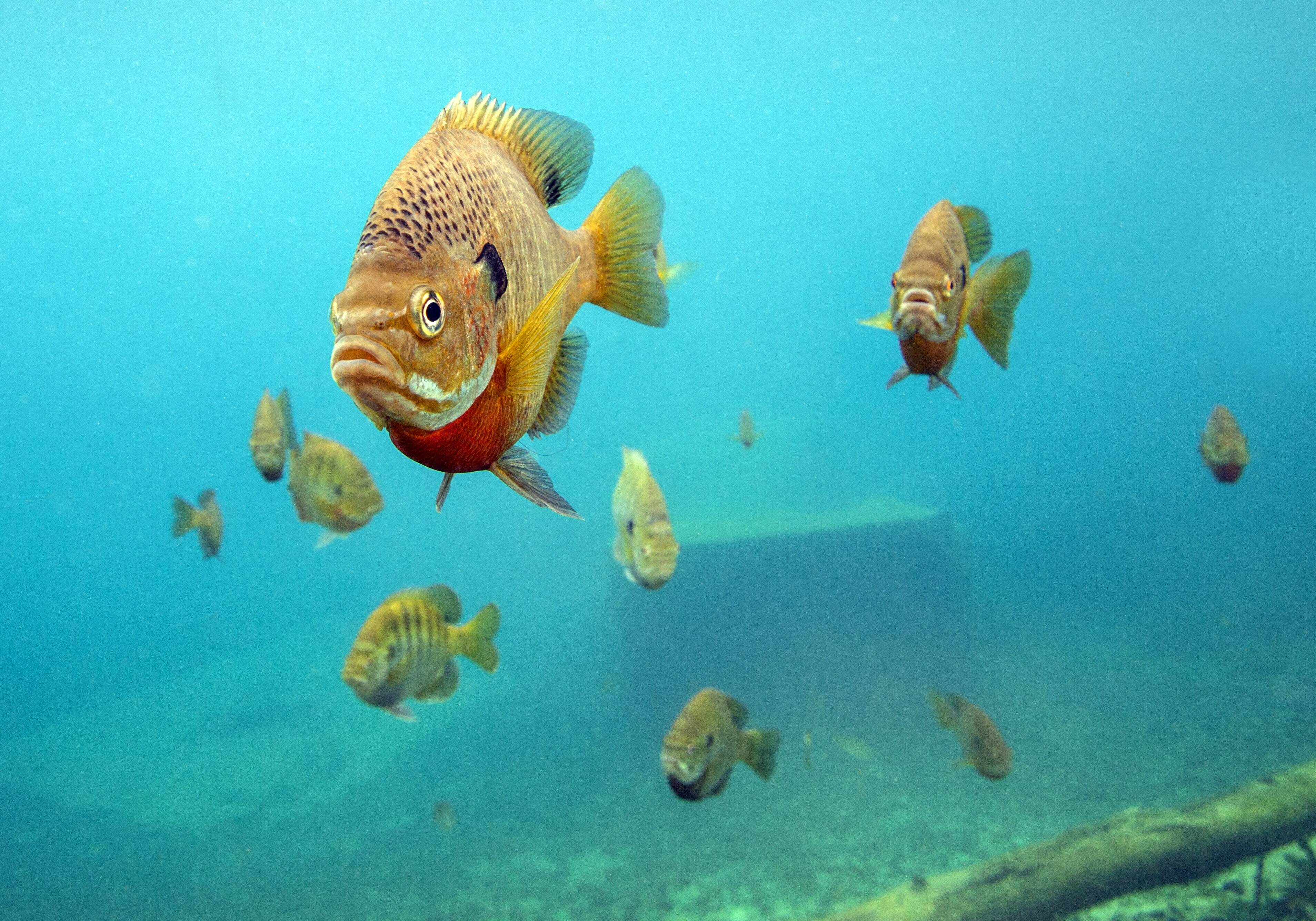What Kind of Algae Is in Your Pond? A Guide to Common Algae Types

Algae are a natural part of healthy lake and pond ecosystems. Many types contribute positively—producing oxygen and forming the base of the aquatic food web. But when nutrient levels become unbalanced, algae can grow rapidly, turning clear water into a green, murky, or even hazardous environment.
The key to successful management is knowing what kind of algae you’re dealing with. Whether your concern is water clarity, recreational use, or ecological health, proper identification and a thoughtful management plan make all the difference.
Planktonic Algae (Free-Floating Algae)Planktonic algae are microscopic and suspended in the water column, giving water a cloudy green or “pea soup” appearance. Some types are benign, while others can form dense blooms under the right conditions.
Management Tips:
- Limit nutrient runoff—especially phosphorus—from lawn care or nearby land use.
- Plant native buffer vegetation to trap nutrients before they reach the pond.
- Apply phosphorus-binding products to reduce internal nutrient loads.
- Use licensed professional applicators for algaecide treatments, and combine with aeration or biological tools to avoid oxygen crashes.
This algae grows in long, hair-like strands and often forms floating mats. It thrives in nutrient-rich, shallow water and is among the most visible types in Wisconsin ponds.
Management Tips:
- Manually remove mats to reduce organic matter and nutrient recycling.
- Use diffused aeration to increase oxygen levels and improve circulation.
- Apply beneficial bacteria to break down bottom muck and limit nutrient availability.
- For large mats, a professionally applied algaecide may be necessary—always used in combination with long-term nutrient and oxygen management.
Cyanobacteria, commonly known as blue-green algae, can form harmful algal blooms (HABs) that produce toxins dangerous to people, pets, and wildlife. These are increasingly common in nutrient-rich, stagnant water.
Management Tips:
- Reduce nutrient loading from fertilizers, agricultural runoff, and septic systems.
- Install aeration to prevent stagnant, low-oxygen conditions that favor cyanobacteria.
- Apply phosphorus binders to control internal nutrient levels.
- Treat with algaecides only under professional supervision, as improper use—especially of copper-based formulas—can be harmful to aquatic life. Strain identification is important for safety.
Algae Identification and Monitoring
Smart algae management starts with good information:
- Use visual inspection to observe color, location, and growth structure.
- Conduct regular water testing for nutrients, dissolved oxygen, and clarity.
- Practice seasonal monitoring to catch early signs of algae overgrowth and make timely interventions.
A Preventative Approach to Algae Control
Algae are part of every pond—but too much of a good thing can create serious problems. While algaecides applied by professionals can help, lasting algae control starts with proactive, preventative lake and pond management.
At Wisconsin Lake & Pond Resource, we take a balanced approach to algae management—focusing on long-term health through nutrient control, aeration, and regular monitoring. This strategy reduces the need for reactive treatments and helps keep your waterbody healthier, safer, and more beautiful year after year.
Ready to improve the health of your pond or lake?
Contact Wisconsin Lake & Pond Resource today to request a customized algae control plan.
About Wisconsin Lake & Pond Resource, A Jones Lake Management Partner
Wisconsin Lake & Pond Resource specializes in comprehensive lake and pond management solutions, including algae and aquatic weed control, aeration, hydraulic dredging, erosion control, and fisheries management. As a Jones Lake Management Partner, we serve a diverse range of clients, including HOAs, golf courses, municipalities, and private lake owners. With a commitment to science-driven strategies and environmental sustainability, Wisconsin Lake & Pond Resource helps maintain and restore aquatic ecosystems for long-term health and enjoyment.
Topics
- Aeration (2)
- Algae (2)
- Aquatic Weeds & Algae Control (13)
- Bathymetry Mapping (2)
- Company News & Updates (33)
- Erosion Control & Sediment Reduction (4)
- Fish Management (1)
- fish stocking (6)
- Fisheries Management (19)
- Fishery (2)
- Fountains & Aeration (15)
- Hydraulic Dredging (5)
- Invasive Species Management (6)
- Lake & Pond Management (46)
- Lake Management (1)
- Native Wetland Plantings (1)
- Nutrient Management (8)
- Pond Management (1)
- Seasonal Pond Management (15)
- Sediment Sampling (1)
- Stormwater & Runoff Management (5)
- Sustainability & Eco-Friendly Solutions (4)
- Water Quality (3)
- Water Quality Monitoring (2)
